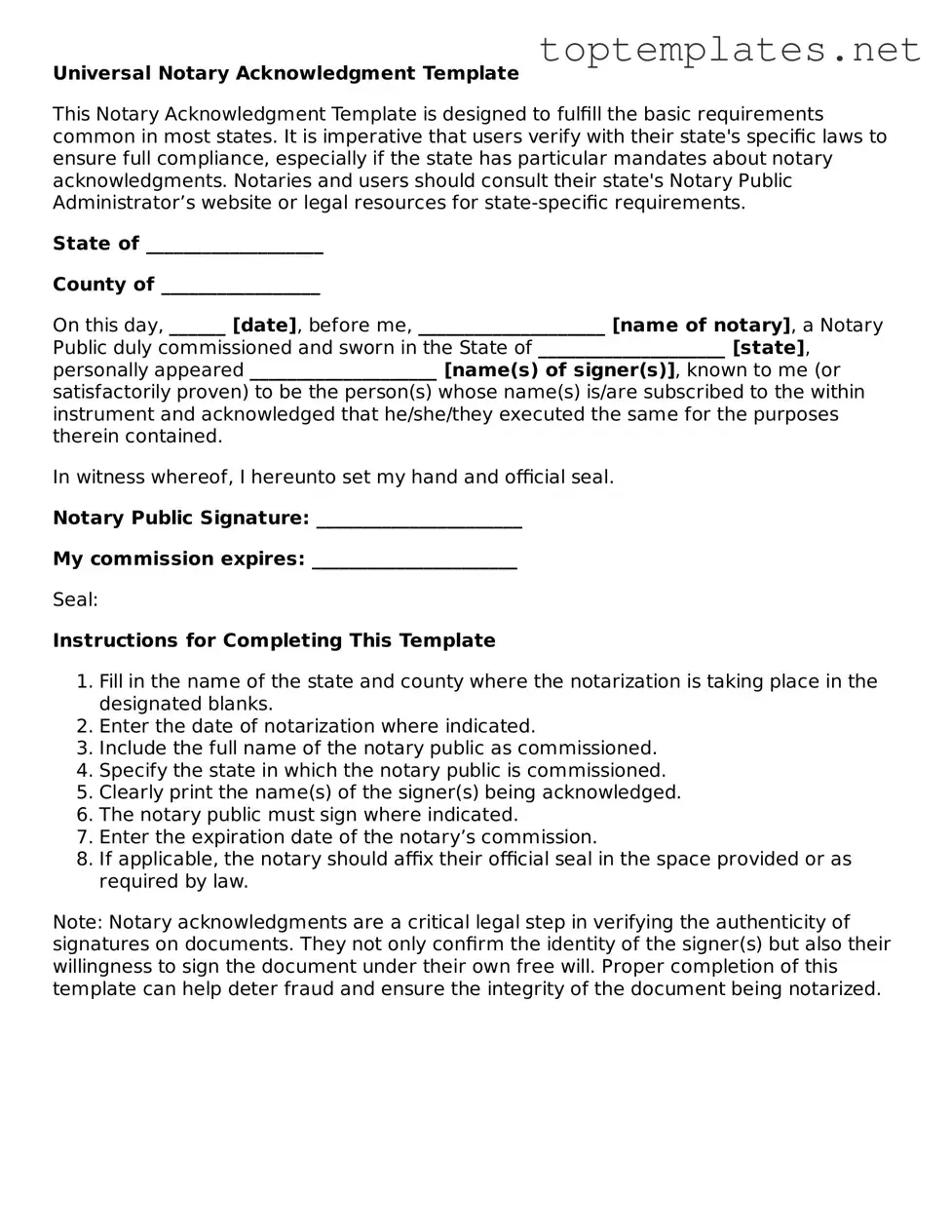Universal Notary Acknowledgment Template
This Notary Acknowledgment Template is designed to fulfill the basic requirements common in most states. It is imperative that users verify with their state's specific laws to ensure full compliance, especially if the state has particular mandates about notary acknowledgments. Notaries and users should consult their state's Notary Public Administrator’s website or legal resources for state-specific requirements.
State of ___________________
County of _________________
On this day, ______ [date], before me, ____________________ [name of notary], a Notary Public duly commissioned and sworn in the State of ____________________ [state], personally appeared ____________________ [name(s) of signer(s)], known to me (or satisfactorily proven) to be the person(s) whose name(s) is/are subscribed to the within instrument and acknowledged that he/she/they executed the same for the purposes therein contained.
In witness whereof, I hereunto set my hand and official seal.
Notary Public Signature: ______________________
My commission expires: ______________________
Seal:
Instructions for Completing This Template
- Fill in the name of the state and county where the notarization is taking place in the designated blanks.
- Enter the date of notarization where indicated.
- Include the full name of the notary public as commissioned.
- Specify the state in which the notary public is commissioned.
- Clearly print the name(s) of the signer(s) being acknowledged.
- The notary public must sign where indicated.
- Enter the expiration date of the notary’s commission.
- If applicable, the notary should affix their official seal in the space provided or as required by law.
Note: Notary acknowledgments are a critical legal step in verifying the authenticity of signatures on documents. They not only confirm the identity of the signer(s) but also their willingness to sign the document under their own free will. Proper completion of this template can help deter fraud and ensure the integrity of the document being notarized.
